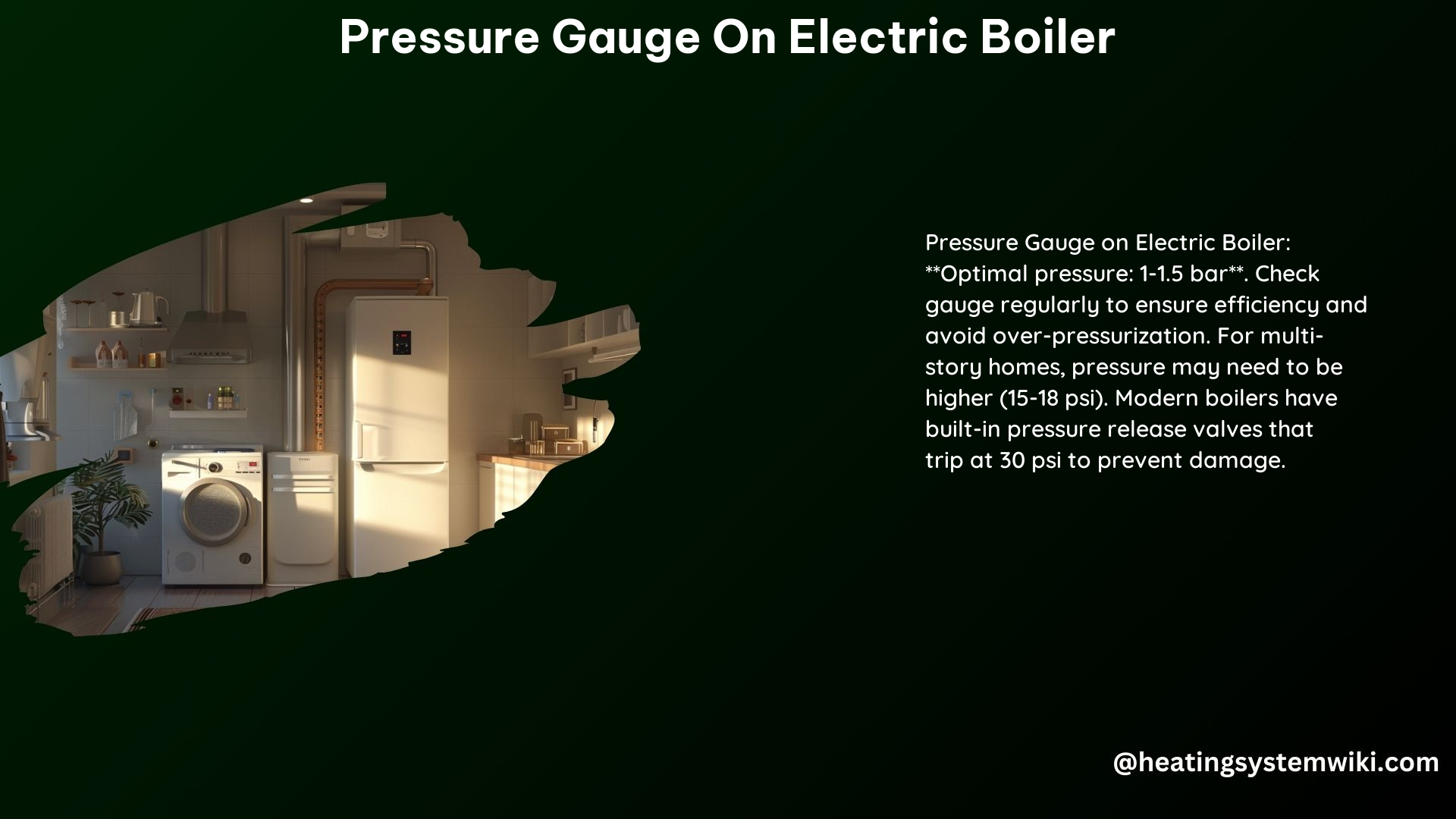The pressure gauge on an electric boiler is a critical component that ensures the safe and efficient operation of the heating system. This comprehensive guide will delve into the intricacies of the pressure gauge, providing you with a deep understanding of its functionality, technical specifications, and essential maintenance practices.
Typical Measuring Range
The typical measuring range of a boiler pressure gauge on an electric boiler is between 0 and 30 pounds per square inch (psi). However, the ideal operating pressure for most electric boilers is between 12 and 20 psi. This range is crucial for maintaining the optimal performance and safety of the heating system.
Frequency of Checks

It is recommended to check the pressure gauge on an electric boiler during the annual boiler service, which should be performed by a Gas Safe registered engineer. This ensures that the boiler is operating within the recommended pressure range and helps identify any potential issues early on. Regular checks can prevent costly repairs and ensure the longevity of the heating system.
Common Causes of High Pressure Readings
High pressure readings on an electric boiler pressure gauge can be caused by several factors, including:
-
Faulty Pressure Relief Valve: A malfunctioning pressure relief valve can prevent the boiler from releasing excess pressure, leading to high readings. The pressure relief valve is typically set to open at 30 psi, and it should be checked for proper operation during the annual service.
-
Waterlogged Pressure Tank: A waterlogged pressure tank can cause the pressure to rise excessively. The pressure tank is responsible for maintaining the correct pressure in the system, and a waterlogged tank can disrupt this balance.
-
Defective Water Fill Valve: A faulty water fill valve can allow too much water into the system, increasing pressure. The water fill valve should be inspected for proper operation and adjusted or replaced if necessary.
-
Incorrect Boiler Temperature: Setting the boiler temperature too high can lead to high pressure readings. The boiler’s temperature should be maintained within the manufacturer’s recommended range, typically between 180°F and 200°F.
Common Causes of Low Pressure Readings
Low pressure readings on an electric boiler pressure gauge can be caused by:
-
Leaks in the System: Leaks in the heating system can cause the pressure to drop, leading to low readings. The entire system should be inspected for any signs of leaks, and any identified leaks should be promptly repaired.
-
Faulty Expansion Vessel: A malfunctioning expansion vessel can prevent the system from maintaining the correct pressure. The expansion vessel is responsible for accommodating the expansion of the heating water as it heats up, and a faulty vessel can result in low pressure.
-
Low Water Level: A low water level in the boiler can cause the pressure to drop. The boiler’s water level should be checked regularly and topped up as necessary to maintain the recommended level.
Technical Specifications
The technical specifications of a pressure gauge on an electric boiler typically include:
| Specification | Details |
|---|---|
| Accuracy | Pressure gauges should be accurate to within 1-2% of the full-scale range. This ensures reliable pressure readings. |
| Material | Gauges are usually made of brass or stainless steel for durability and corrosion resistance. Brass is a common choice due to its affordability and resistance to corrosion. |
| Connection Type | Gauges typically have a 1/4″ or 1/2″ NPT (National Pipe Thread) connection, which allows for easy installation and replacement. |
| Pressure Range | The pressure range of the gauge should match the recommended operating pressure of the boiler, typically between 0 and 30 psi. |
DIY Tips
For DIY maintenance and troubleshooting, it is essential to:
-
Consult the Boiler Manual: Refer to the boiler manual for specific guidance on pressure gauge operation and maintenance. The manual will provide the manufacturer’s recommended pressure range and any specific instructions for your model.
-
Use a Reliable Pressure Gauge: Ensure the pressure gauge is accurate and reliable to avoid false readings. Consider investing in a high-quality gauge with a calibration certificate to ensure accurate measurements.
-
Check for Leaks: Regularly inspect the heating system for any signs of leaks, such as water stains or dripping. Leaks can cause the pressure to drop, leading to low readings.
-
Maintain the Expansion Vessel: Ensure the expansion vessel is functioning correctly to maintain the correct pressure. This may involve checking the pre-charge pressure, which is typically between 12 and 15 psi when the system is cold.
By following these guidelines and understanding the technical aspects of the pressure gauge on your electric boiler, you can ensure the safe and efficient operation of your heating system, minimizing the risk of costly repairs and ensuring the longevity of your investment.
Reference:
- https://forum.heatinghelp.com/discussion/178532/pressure-gauge-is-always-showing-0-psi
- https://www.viessmann.co.uk/en/heating-advice/boilers/how-to-read-a-boiler-pressure-gauge.html
- https://trusteyman.com/blog/what-your-boiler-pressure-should-be-when-its-heated/
